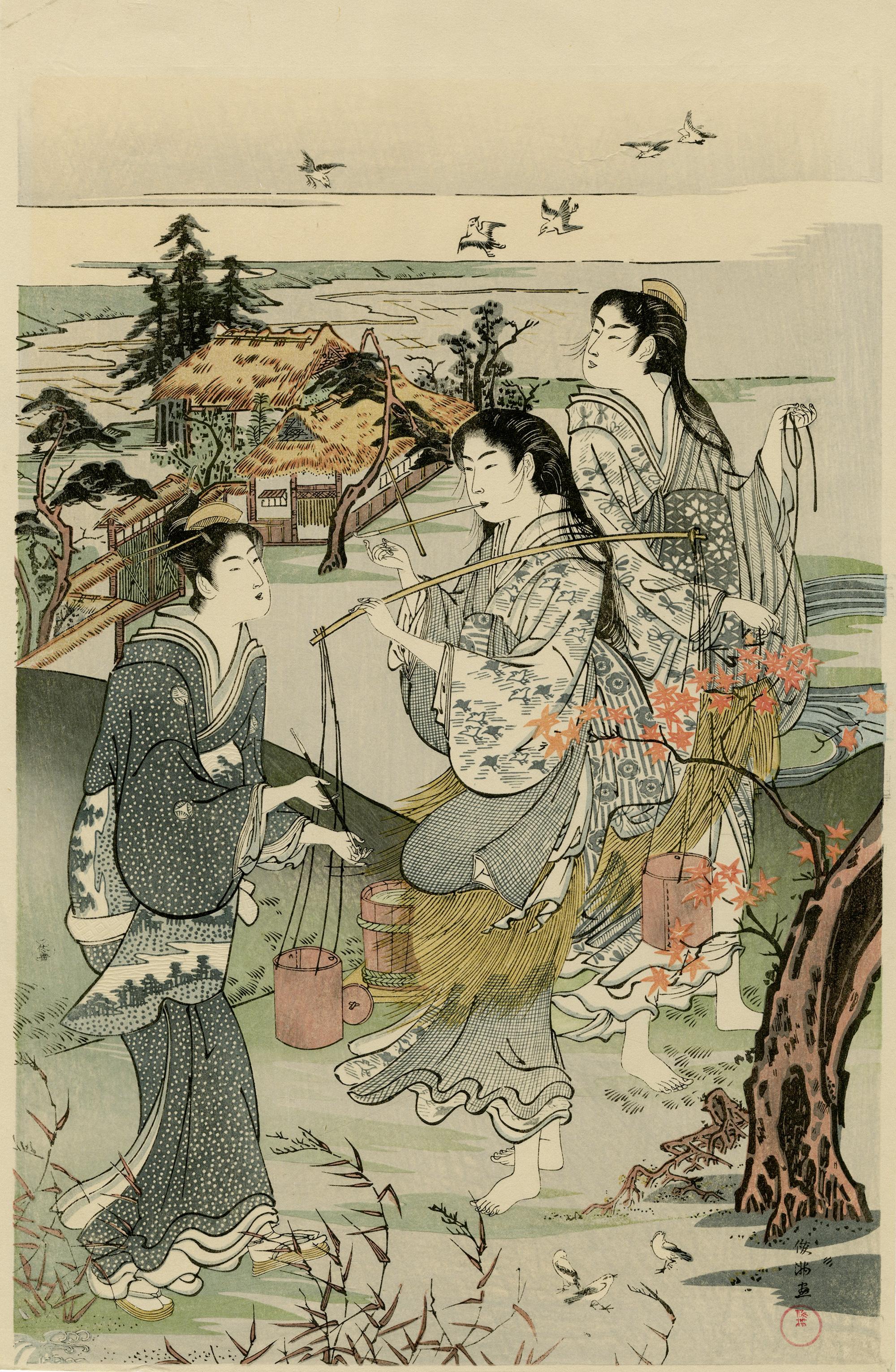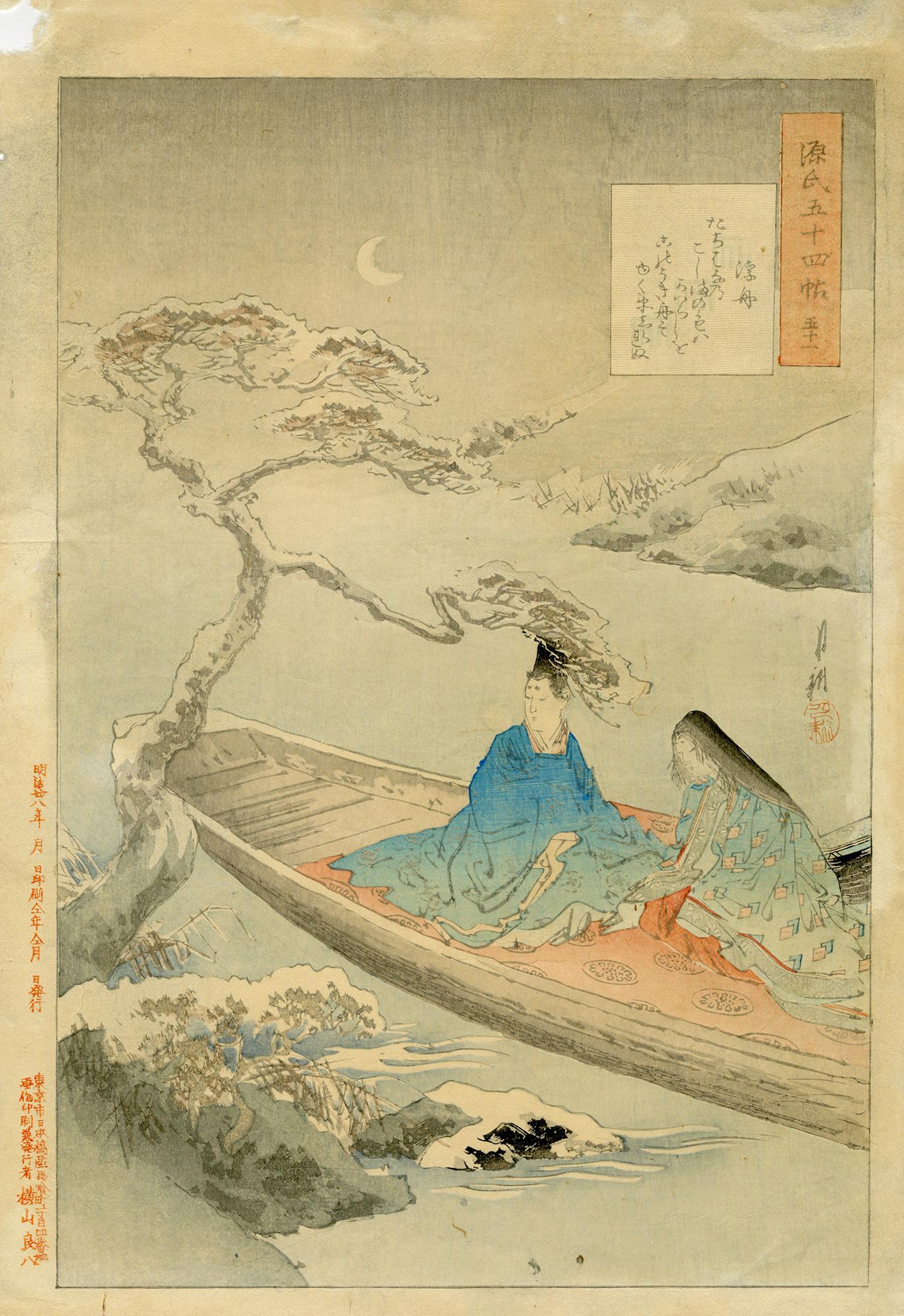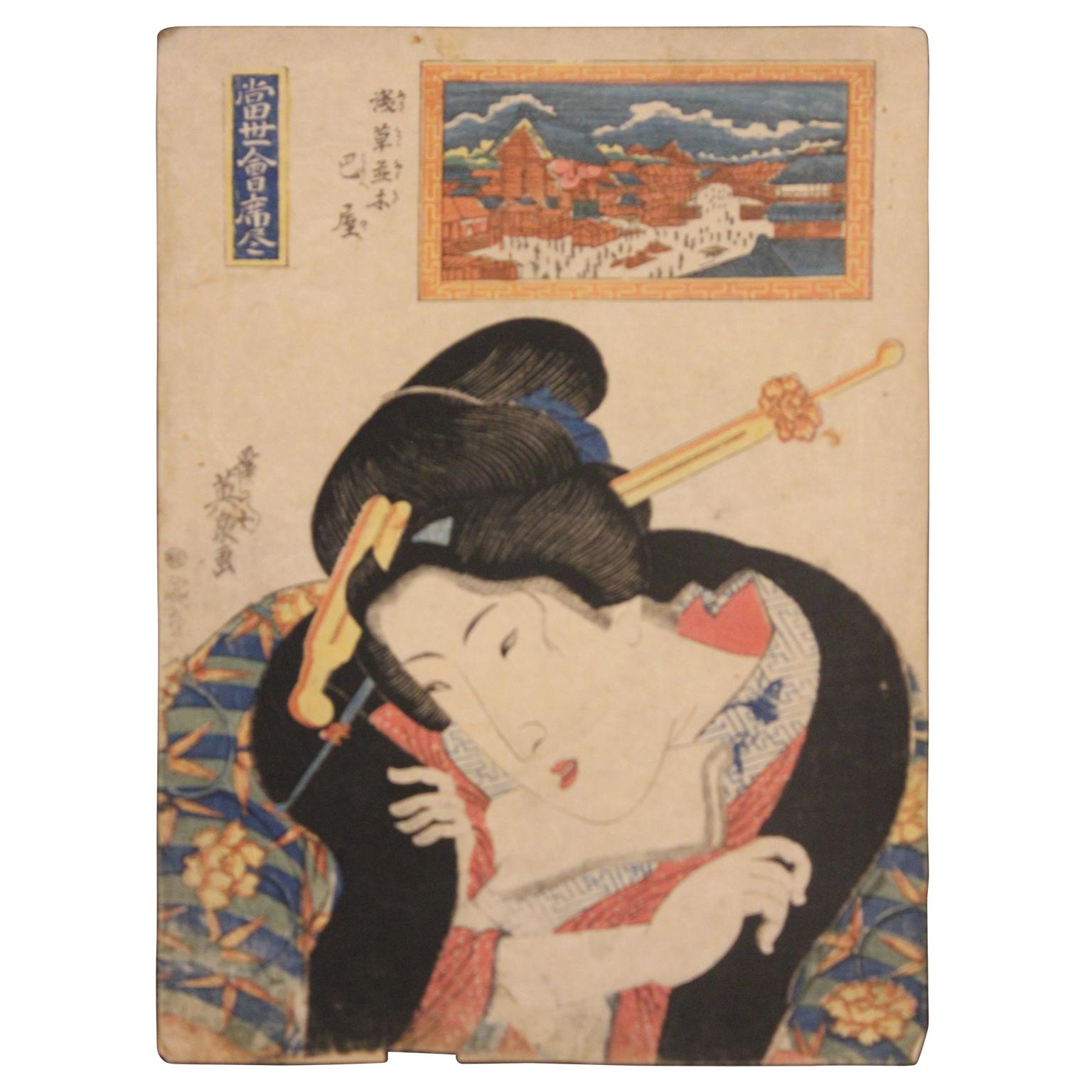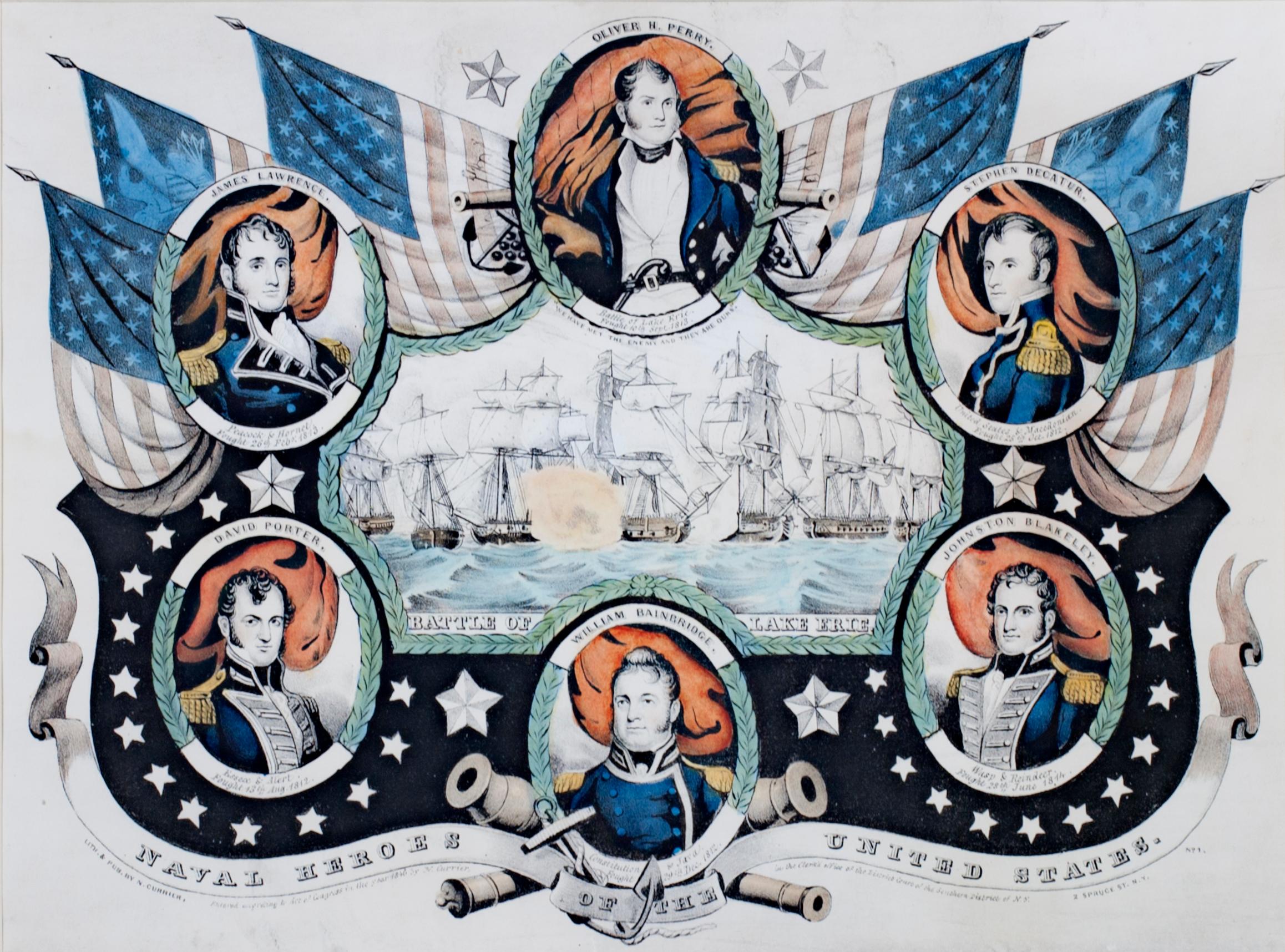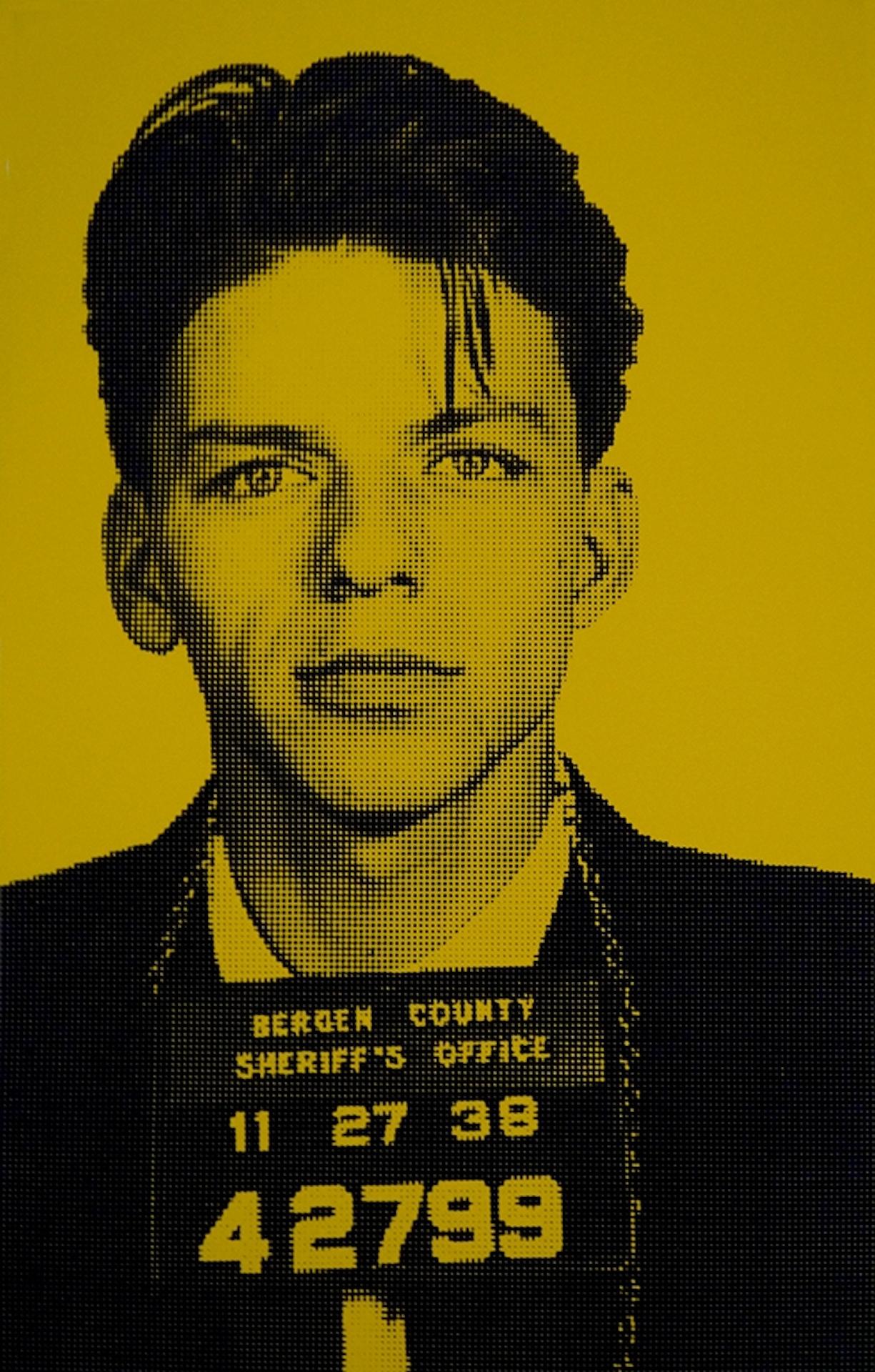Items Similar to Pilgrimage to Enoshima
Want more images or videos?
Request additional images or videos from the seller
1 of 3
Ogata GekkoPilgrimage to Enoshima1893
1893
About the Item
Tokyo: Matsuki Heikichi, 1893
Woodcut in ink with embossing and hand-coloring in watercolor on handmade mulberry paper, 14 1/2 x 9 7/8 inches (368 x 251 mm), ōban tate-e, full margins. Scattered handling wear, adhesive residue on the verso, and minor edge losses at the left sheet edge and top right corner, well outside of image area. Meiji period (1868-1912), from the series of 47 essays and images called Sketches by Gekkō (Gekkō zuihitsu).
Ogaka Gekkō (originally known as Nakagami Masanosuke) was a self-trained artist who was orphaned at a young age and survived by illustrating brochures, selling drawings, and designing rickshaws. While the likes of Kitagawa Utamaro, Hishikawa Moronobu, Keisei Eisen, and Suzuki Harunobu were regarded as the innovators and masters of the bijin-ga form, Gekkō was one of the first Japanese woodblock print designers to achieve international recognition during his lifetime.
– Parkstone International, Looking Beyond the Portrait, November 5, 2015.
- Creator:Ogata Gekko
- Creation Year:1893
- Dimensions:Height: 14.5 in (36.83 cm)Width: 9.88 in (25.1 cm)
- Medium:
- Movement & Style:
- Period:
- Condition:
- Gallery Location:Middletown, NY
- Reference Number:
About the Seller
5.0
Gold Seller
These expertly vetted sellers are highly rated and consistently exceed customer expectations.
Established in 2004
1stDibs seller since 2022
30 sales on 1stDibs
Typical response time: 9 hours
- ShippingRetrieving quote...Ships From: Middletown, NY
- Return PolicyA return for this item may be initiated within 30 days of delivery.
More From This SellerView All
- Mu-TamagawaLocated in Middletown, NYWoodcut in ink with embossing and hand-coloring in watercolor on laid Japon paper, 16 x 10 inches (406 x 253 mm), ōban tate-e, full margins. Scattered handling wear and toning, other...Category
Late 19th Century Edo Portrait Prints
MaterialsHandmade Paper, Watercolor, Woodcut
- Courtiers under a wisteria draped pine treeLocated in Middletown, NYTokyo: Yokoyama Ryohachi, 1892 Woodcut in ink with embossing and hand-coloring in watercolor on handmade mulberry paper, 14 1/2 x 9 7/8 inches (368 x 251 mm), ōban tate-e, the full ...Category
Late 19th Century Edo Portrait Prints
MaterialsHandmade Paper, Watercolor, Woodcut
- Toshogu ShrineLocated in Middletown, NYIn image of the Tokugawa family paying homage to Tosho-gu Shrine in Nikko. Tokyo: Matsuki Heikichi, 1896 Woodcut in ink with embossing and hand-coloring in watercolor on handmade m...Category
Late 19th Century Edo Figurative Prints
MaterialsHandmade Paper, Watercolor, Woodcut
- The Battle of Dan-no-ura in Yashima, Nagato Province in the First Year .....By Utagawa YoshitoraLocated in Middletown, NYThe Battle of Dan-no-ura in Yashima, Nagato Province in the First Year of the Bunji Era (1185) Tokyo c. 1830 Woodblock print (nishiki-e) with ink and hand-coloring in watercolor on handmade mulberry paper, 14 7/16 x 9 15/16 inches (367 x 252 mm), ōban tate-e, the full sheet. In good condition with some handling creases. Colors are fresh and extremely vibrant. The right panel from the triptych by Yoshitora depicting one of Japan's most storied naval battles. An impression of this work may be found in the permanent collection of the Honolulu Museum of Art. The great naval battle of Dan-no-ura in 1185 was the final climax in a long series of bitter wars between two powerful families in feudal Japan...Category
Early 19th Century Edo Figurative Prints
MaterialsHandmade Paper, Watercolor, Woodcut
- Actor Iwai Shigaku as Somenoi in "Denka chaya adauchi"By KuniyoshiLocated in Middletown, NYActor Iwai Shigaku as Somenoi in "Denka chaya adauchi" (Revenge at the Denka Teahouse), by Shigeharu, Ryusai (also called Kuniyoshi) Tokyo: Horie Ichiba Wataki, 1835. Woodcut on la...Category
Early 19th Century Edo Portrait Prints
MaterialsLaid Paper, Handmade Paper, Woodcut
- Union - Whom --- Has Join'd, Let No Man put Asunder!Located in Middletown, NYEtching and engraving with hand coloring in watercolor on cream laid paper. 6 3/4 X 9 5/8 inches (170 x 244 mm), margins trimmed, image intact. Rubbing in the lower left image area obscuring the publishing information (which reads Published by Mm. Darchery, St. James Street March 11, 1783), scattered light foxing, corner loss, top left corner, well outside of image area. "SMP" collector's stamp in red ink on the verso (not in Lugt), and the name "Renier" and the initials "AR" in black ink on the verso. Colors are extremely fresh. Impressions of this work may be found in the permanent collection of the British Museum, and the Yale Center for British Art. Ex-Collection of Anne & Ferdinand Gabriel (F.G.) Renier, reknowned for their inspriational collection of children's books and works on paper, now housed in the Victoria & Albert Museum. _____ The devil officiates at the wedding of Tory Lord North, and Charles James Fox, the Whig statesman whose career spanned almost four decades in Parliament. The satirical scene is the signing of the Fox-North coalition, which was a short-lived partnership the two formed while combining forces in the House of Commons to oust then Prime Minister William Petty, Earl of Shelburne. Fox had fallen out of favor with the Irish born Shelburne, also a Whig, whose ministry remained in power just long enough to see the American War of Independence...Category
Late 18th Century English School Figurative Prints
MaterialsWatercolor, Handmade Paper, Laid Paper, Etching
You May Also Like
- Biensennyo-ko Japanese Woodblock PrintBy Keisai EisenLocated in Houston, TXJapanese Woodblock print of a Biensennyo-ko a powder face women. Behind the women is a framed cityscape. The print is possibly from the series "Eight Favorite Things in the Modern World". The woodblock print is printed on rice paper. The print is not framed. Artist Biography: Keisai Eisen...Category
Early 1800s Edo Portrait Prints
MaterialsWoodcut
- The Surgeon’s Photograph by Mychael Barratt, limited edition woodcut printLocated in Deddington, GBThe Surgeon’s Photograph by Mychael Barratt [2022] limited_edition and hand signed by the artist Woodcut Print on Paper Edition number of 50 Image size: H:50 cm x W:49 cm Complete S...Category
21st Century and Contemporary Contemporary Landscape Prints
MaterialsPaper, Woodcut
- 19th century color lithograph portraits ship seascape patriotic flags militaryBy Nathaniel CurrierLocated in Milwaukee, WIThe present hand-colored lithograph is an excellent example of patriotic mid-nineteenth century American imagery. The print shows the battle and several of the major figures involved in the Battle of Lake Erie: At the center is a view of several frigates on the lake, embroiled in conflict. Above the battle is the quotation: "We have met the enemy and they are ours." Surrounding are laurel-lined roundels with portraits of Oliver Hazard Perry (1785-1819), Stephen Dicateur (1779-1820), Johnston Blakeley (1871-1814), William Bainbridge (1774-1833), David Porter (1780-1843), and James Lawrence (1781-1813) - all of these framed by American flags, banners and cannons. This print shows that the Battle of Lake Erie, part of the War of 1812, still held resonance for American audiences several decades later and was part of the larger narrative of the founding of the country. 9.5 x 13.5 inches, artwork 20 x 23.38 inches, frame Entitled in the image Signed in the stone, lower left "Lith. and Pub. by N. Currier" Inscribed lower right "2 Spruce N.Y." and "No. 1" Copyrighted lower center "Entered according to Act of Congress in the year 1846 by N. Currier in the Clerk's office of the Southern District of N.Y." Framed to conservation standards using 100 percent rag matting and housed in a gold gilded moulding. Nathaniel Currier was a tall introspective man with a melancholy nature. He could captivate people with his piercing stare or charm them with his sparkling blue eyes. Nathaniel was born in Roxbury, Massachusetts on March 27th, 1813, the second of four children. His parents, Nathaniel and Hannah Currier, were distant cousins who lived a humble yet spartan life. When Nathaniel was eight years old, tragedy struck. Nathaniel’s father unexpectedly passed away leaving Nathaniel and his eleven-year-old brother Lorenzo to provide for the family. In addition to their mother, Nathaniel and Lorenzo had to care for six-year-old sister Elizabeth and two-year-old brother Charles. Nathaniel worked a series of odd jobs to support the family, and at fifteen, he started what would become a life-long career when he apprenticed in the Boston lithography shop of William and John Pendleton. A Bavarian gentleman named Alois Senefelder invented lithography just 30 years prior to young Nat Currier’s apprenticeship. While under the employ of the brothers Pendleton, Nat was taught the art of lithography by the firm’s chief printer, a French national named Dubois, who brought the lithography trade to America. Lithography involves grinding a piece of limestone flat and smooth then drawing in mirror image on the stone with a special grease pencil. After the image is completed, the stone is etched with a solution of aqua fortis leaving the greased areas in slight relief. Water is then used to wet the stone and greased-ink is rolled onto the raised areas. Since grease and water do not mix, the greased-ink is repelled by the moisture on the stone and clings to the original grease pencil lines. The stone is then placed in a press and used as a printing block to impart black on white images to paper. In 1833, now twenty-years old and an accomplished lithographer, Nat Currier left Boston and moved to Philadelphia to do contract work for M.E.D. Brown, a noted engraver and printer. With the promise of good money, Currier hired on to help Brown prepare lithographic stones of scientific images for the American Journal of Sciences and Arts. When Nat completed the contract work in 1834, he traveled to New York City to work once again for his mentor John Pendleton, who was now operating his own shop located at 137 Broadway. Soon after the reunion, Pendleton expressed an interest in returning to Boston and offered to sell his print shop to Currier. Young Nat did not have the financial resources to buy the shop, but being the resourceful type he found another local printer by the name of Stodart. Together they bought Pendleton’s business. The firm ‘Currier & Stodart’ specialized in "job" printing. They produced many different types of printed items, most notably music manuscripts for local publishers. By 1835, Stodart was frustrated that the business was not making enough money and he ended the partnership, taking his investment with him. With little more than some lithographic stones, and a talent for his trade, twenty-two year old Nat Currier set up shop in a temporary office at 1 Wall Street in New York City. He named his new enterprise ‘N. Currier, Lithographer’ Nathaniel continued as a job printer and duplicated everything from music sheets to architectural plans. He experimented with portraits, disaster scenes and memorial prints, and any thing that he could sell to the public from tables in front of his shop. During 1835 he produced a disaster print Ruins of the Planter's Hotel, New Orleans, which fell at two O’clock on the Morning of the 15th of May 1835, burying 50 persons, 40 of whom Escaped with their Lives. The public had a thirst for newsworthy events, and newspapers of the day did not include pictures. By producing this print, Nat gave the public a new way to “see” the news. The print sold reasonably well, an important fact that was not lost on Currier. Nat met and married Eliza Farnsworth in 1840. He also produced a print that same year titled Awful Conflagration of the Steamboat Lexington in Long Island Sound on Monday Evening, January 18, 1840, by which melancholy occurrence over One Hundred Persons Perished. This print sold out very quickly, and Currier was approached by an enterprising publication who contracted him to print a single sheet addition of their paper, the New York Sun. This single page paper is presumed to be the first illustrated newspaper ever published. The success of the Lexington print launched his career nationally and put him in a position to finally lift his family up. In 1841, Nat and Eliza had their first child, a son they named Edward West Currier. That same year Nat hired his twenty-one year old brother Charles and taught him the lithography trade, he also hired his artistically inclined brother Lorenzo to travel out west and make sketches of the new frontier as material for future prints. Charles worked for the firm on and off over the years, and invented a new type of lithographic crayon which he patented and named the Crayola. Lorenzo continued selling sketches to Nat for the next few years. In 1843, Nat and Eliza had a daughter, Eliza West Currier, but tragedy struck in early 1847 when their young daughter died from a prolonged illness. Nat and Eliza were grief stricken, and Eliza, driven by despair, gave up on life and passed away just four months after her daughter’s death. The subject of Nat Currier’s artwork changed following the death of his wife and daughter, and he produced many memorial prints and sentimental prints during the late 1840s. The memorial prints generally depicted grief stricken families posed by gravestones (the stones were left blank so the purchasers could fill in the names of the dearly departed). The sentimental prints usually depicted idealized portraits of women and children, titled with popular Christian names of the day. Late in 1847, Nat Currier married Lura Ormsbee, a friend of the family. Lura was a self-sufficient woman, and she immediately set out to help Nat raise six-year-old Edward and get their house in order. In 1849, Lura delivered a son, Walter Black Currier, but fate dealt them a blow when young Walter died one year later. While Nat and Lura were grieving the loss of their new son, word came from San Francisco that Nat’s brother Lorenzo had also passed away from a brief illness. Nat sank deeper into his natural quiet melancholy. Friends stopped by to console the couple, and Lura began to set an extra place at their table for these unexpected guests. She continued this tradition throughout their lives. In 1852, Charles introduced a friend, James Merritt Ives, to Nat and suggested he hire him as a bookkeeper. Jim Ives was a native New Yorker born in 1824 and raised on the grounds of Bellevue Hospital where his father was employed as superintendent. Jim was a self-trained artist and professional bookkeeper. He was also a plump and jovial man, presenting the exact opposite image of his new boss. Jim Ives met Charles Currier through Caroline Clark, the object of Jim’s affection. Caroline’s sister Elizabeth was married to Charles, and Caroline was a close friend of the Currier family. Jim eventually proposed marriage to Caroline and solicited an introduction to Nat Currier, through Charles, in hopes of securing a more stable income to support his future wife. Ives quickly set out to improve and modernize his new employer’s bookkeeping methods. He reorganized the firm’s sizable inventory, and used his artistic skills to streamline the firm’s production methods. By 1857, Nathaniel had become so dependent on Jims’ skills and initiative that he offered him a full partnership in the firm and appointed him general manager. The two men chose the name ‘Currier & Ives’ for the new partnership, and became close friends. Currier & Ives produced their prints in a building at 33 Spruce Street where they occupied the third, fourth and fifth floors. The third floor was devoted to the hand operated printing presses that were built by Nat's cousin, Cyrus Currier, at his shop Cyrus Currier & Sons in Newark, NJ. The fourth floor found the artists, lithographers and the stone grinders at work. The fifth floor housed the coloring department, and was one of the earliest production lines in the country. The colorists were generally immigrant girls, mostly German, who came to America with some formal artistic training. Each colorist was responsible for adding a single color to a print. As a colorist finished applying their color, the print was passed down the line to the next colorist to add their color. The colorists worked from a master print displayed above their table, which showed where the proper colors were to be placed. At the end of the table was a touch up artist who checked the prints for quality, touching-in areas that may have been missed as it passed down the line. During the Civil War, demand for prints became so great that coloring stencils were developed to speed up production. Although most Currier & Ives prints were colored in house, some were sent out to contract artists. The rate Currier & Ives paid these artists for coloring work was one dollar per one hundred small folios (a penny a print) and one dollar per one dozen large folios. Currier & Ives also offered uncolored prints to dealers, with instructions (included on the price list) on how to 'prepare the prints for coloring.' In addition, schools could order uncolored prints from the firm’s catalogue to use in their painting classes. Nathaniel Currier and James Merritt Ives attracted a wide circle of friends during their years in business. Some of their more famous acquaintances included Horace Greeley, Phineas T. Barnum, and the outspoken abolitionists Rev. Henry Ward, and John Greenleaf Whittier (the latter being a cousin of Mr. Currier). Nat Currier and Jim Ives described their business as "Publishers of Cheap and Popular Pictures" and produced many categories of prints. These included Disaster Scenes, Sentimental Images, Sports, Humor, Hunting Scenes, Politics, Religion, City and Rural Scenes, Trains, Ships, Fire Fighters, Famous Race Horses, Historical Portraits, and just about any other topic that satisfied the general public's taste. In all, the firm produced in excess of 7500 different titles, totaling over one million prints produced from 1835 to 1907. Nat Currier retired in 1880, and signed over his share of the firm to his son Edward. Nat died eight years later at his summer home 'Lion’s Gate' in Amesbury, Massachusetts. Jim Ives remained active in the firm until his death in 1895, when his share of the firm passed to his eldest son, Chauncey. In 1902, faced will failing health from the ravages of Tuberculosis, Edward Currier sold his share of the firm to Chauncey Ives...Category
1850s Victorian Landscape Prints
MaterialsLithograph, Watercolor
- Frank Sinatra IV, Screenprint Art, Celebrity Art, Yellow Art, David StudwellBy David StudwellLocated in Deddington, GBFrank Sinatra IV by David Studwell. Hand pulled screen print of music icon Frank Sinatra. 58x36cm Edition of 30 Signed by the artistCategory
21st Century and Contemporary Pop Art Portrait Prints
MaterialsPaper, Screen
- NANETTEBy Nicola SimbariLocated in Aventura, FLSerigraph on paper. Hand signed and numbered by the artist. Artwork appears to be in excellent condition. Artwork has not been examined outside the matting. Image size: 27 x 39 in. M...Category
1970s Expressionist Portrait Prints
MaterialsScreen, Paper
- Ski Paradise, Anne Storno, Limited Edition print, Sport art, Skiiing artLocated in Deddington, GBSki paradise by Anne Storno [2021] limited_edition and hand signed by the artist Screenprinting Edition number 30 Image size: H:58 cm x W:40 cm Complete Size of Unframed Work: H:70 ...Category
21st Century and Contemporary Contemporary Landscape Prints
MaterialsPaper, Screen
Recently Viewed
View AllMore Ways To Browse
Antique Paper Embosser
Meiji Woodblock
Bijin Ga
Japanese Woodblock Prints Utamaro
Utamaro Woodblock Prints
Utamaro Kitagawa
Antique Brochure
Eisen Woodblock
Harunobu Suzuki
Ogata Gekko Prints
Ogata Gekko
Mens Riding Boots
Native Maiden Print
Peter Max Lautrec
Peter Max Toulouse Lautrec
Picasso Fond Noir
Picasso Maternite
Teeny Matisse
